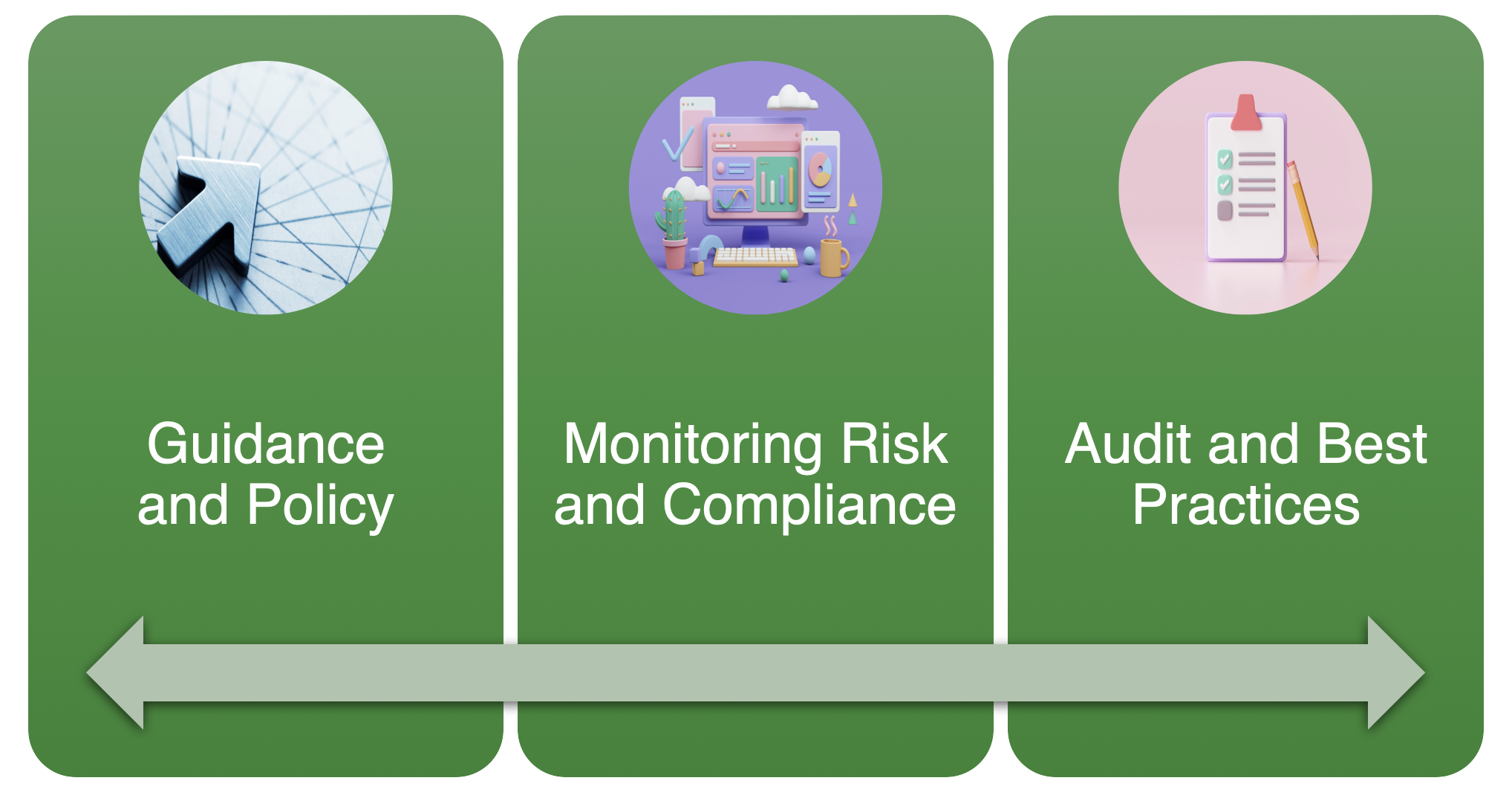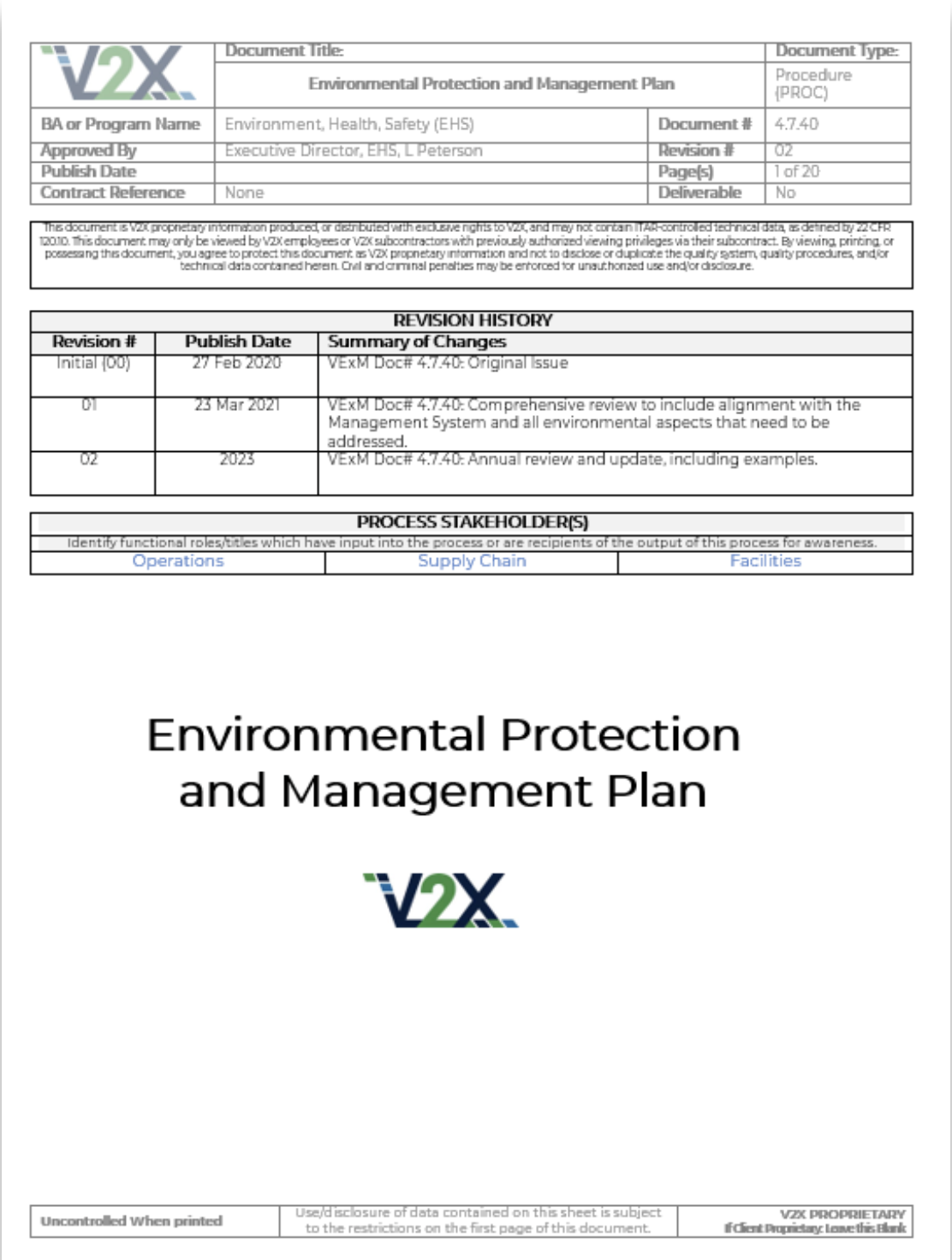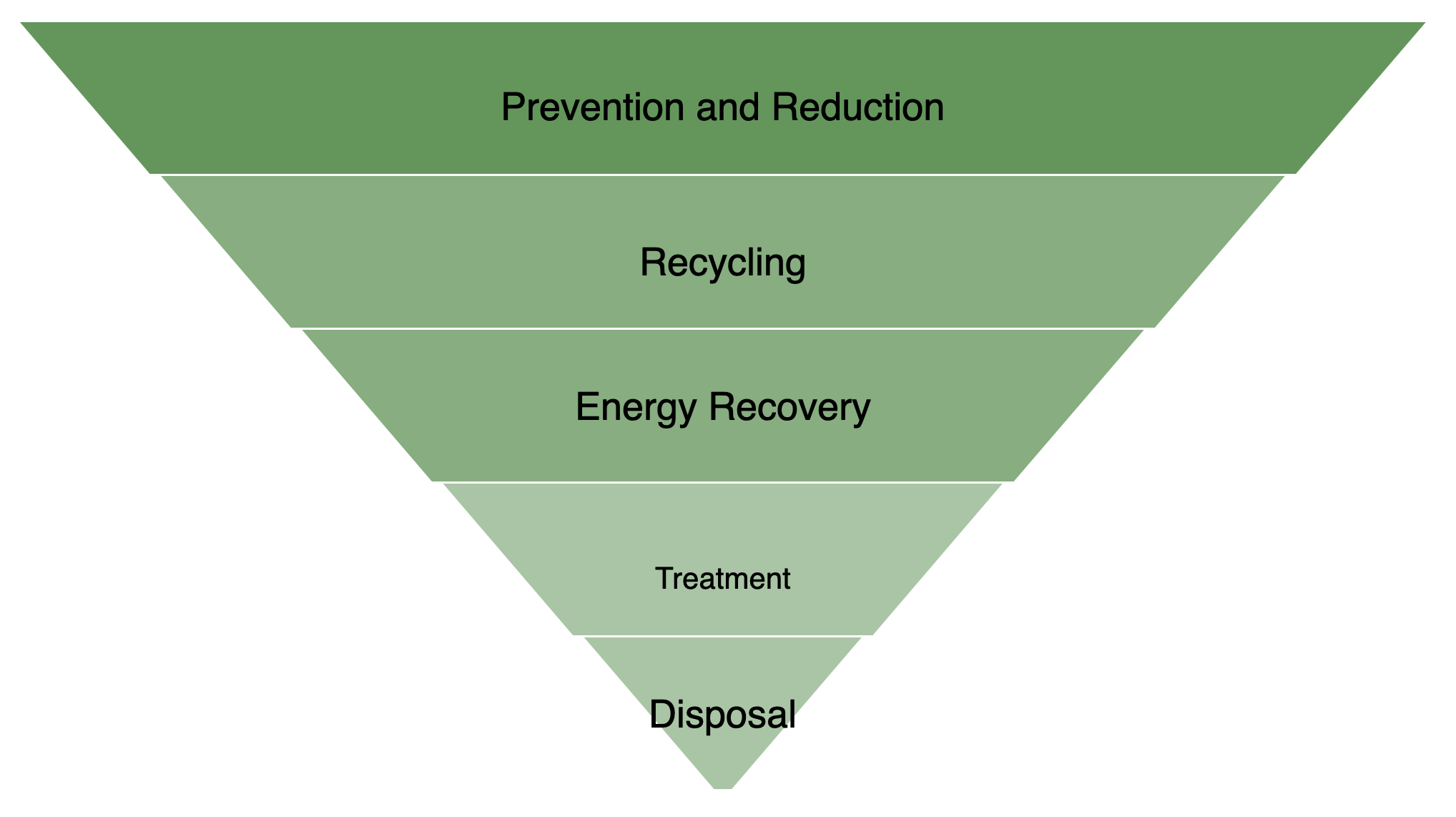V2X ENVIRONMENTAL MANAGEMENT APPROACH
By prioritizing these efforts, V2X is committed to minimizing waste, reducing energy consumption, decreasing greenhouse gas emissions, and conserving natural resources. Moreover, our environmental management approach is designed to meet and exceed the expectations of all our stakeholders—customers, employees, regulators, and the communities we serve. We understand the importance of demonstrating our environmental stewardship and are dedicated to mitigating any adverse effects of our operations.

Our process starts with our policy and governing documents, identifying aspects of our operations that impact the environment, monitoring and measuring performance, and regularly reviewing and improving the system.
Elements of the Program

Guidance and Policy
Our environmental management approach follows these principles:
- Understand environmental aspects and impacts at the program level
- Manage each aspect in a way that is protective of the environment and human health
- Commit to sustainable practices
- Comply with all environmental regulations and customer requirements
- Ensure that environmental impacts are mitigated to the maximum extent practicable


Pollution Prevention Approach
V2X regularly evaluates operations for opportunities to minimize environmental impact, and we emphasize regulatory compliance and an internal accountability framework to ensure success. Our teams continually review our processes and strive to reduce resource consumption and eliminate potential hazards and exposures. Where potential impacts remain, appropriate control technologies and procedures are implemented and maintained.
We set the following goals as part of our Pollution Prevention Plan:
- Air/Energy: Reduce fuel usage across the enterprise to reduce greenhouse gas emissions.
- Materials: Implement acquisition programs aimed at procuring products that are environmentally preferable, energy efficient, or contain post-consumer materials, in collaboration with Supply Chain and supplier management.
- Training: Develop an environmental training program focused on hazard communications, waste minimization and pollution prevention.
- Solid Waste: Reduce solid waste by reducing, reusing, and recycling.

EHS Management System (Environmental Aspects)

Example: Red Hill 2023
| Element | Actions |
| Identify environmental aspects and impacts | The program participated in the EHS Assessment conducted Apr 2023. During this visit, HQ evaluated the program’s environmental aspects and impacts of their operations. |
| Awareness of the environmental policy and management program | The program’s operations follow the provisions of the V2X EHS Policy and have provided a summary of all the actions resulting from their Environmental program. |
| Establish environmental goals and objectives and plans to achieve them | The program has established environmental goals and objectives for 2023. These include improvements to the solid waste management program and reducing the use of hazardous materials. |
| Procedure to monitor and measure progress | A plan to measure progress has been provided. |
| Process to review and improve the system | During annual self-assessment. |

Climate Change Strategy and Goals
As a provider of essential services to the U.S. Government, our company is deeply committed to countering climate change and mitigating its effects on military operations. In response, we have established a climate-focused strategy, aiming to minimize our environmental footprint and foster sustainable practices. The three key pillars of this strategy are:
1. Enhancing Energy Efficiency: We seek to actively reduce energy use where possible, through initiatives like adopting LED lighting, the sue of renewable energy sources, and considering alternative fuel or fuel-efficient vehicles.
2. Waste Management: Our comprehensive program emphasizes waste reduction, segregation, recycling, and composting (where possible) to significantly lower waste generation and maximize landfill diversion.
3. Sustainable Procurement: We prioritize eco-friendly products and services, such as recycled materials and energy-saving appliances, per our Green Procurement Policy.
Climate-Related Risks and opportunities
Risks
- New, more stringent policies and cost increases
- Compliance
- GHG emissions regulations such as carbon tax.
- Stakeholders seeking more accountability from companies like V2X to disclose environmental impacts
- Heightened awareness of investors how companies manage and mitigate carbon footprint
Opportunities
- Improving energy efficiency will reduce the total energy consumed and the total operating cost
- Opportunity to be an environmental leader for our industry
- Seek new energy alternatives and opportunities to meet our energy usage needs from renewable resources
- Find eco-friendly raw material and suppliers to mitigate product impacts






